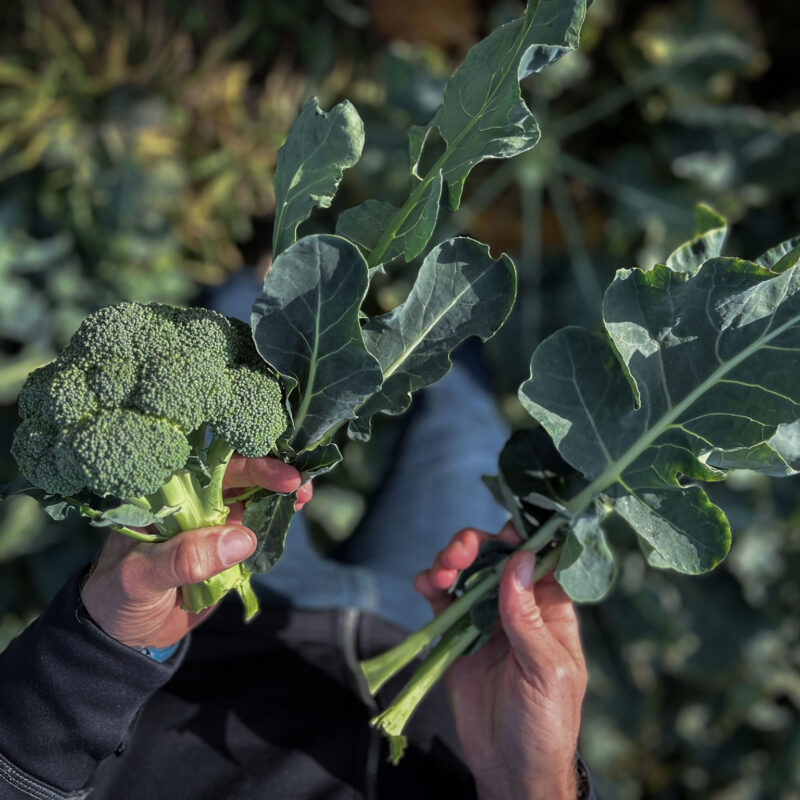Chef of the Year 2024: Cooking with a Climate Budget – Within the Planetary Boundaries
2024.10.16
A new challenge has been announced for Sweden’s Chef of the Year 2024: cooking with a climate budget. Similar to last year’s challenge, where the contestants were given a set amount of money, this year they will work with three kilograms of carbon dioxide equivalents. But what exactly is a climate budget, and how does it work? Meet Stefan Eriksson, Head of Ingredients for Chef of The Year, and Anna Henning Moberg, Operations Manager at Axfoundation’s development center, Torsåker Farm, in a conversation about sustainability, gastronomic creativity – and how we tackle one of the greatest challenges of our time.
It will be a fun and exciting challenge for the chefs – and it’s also what’s needed to help keep us within the planet’s limits. Creativity arises from limitations; it’s a matter of will. In the end, the one who wants it the most will win!
– Stefan Eriksson, Head of Ingredients, Chef of the Year.
The Chef of The Year competition is Sweden’s most prestigious cooking competition, where the best professional chefs compete for the title. In recent years, several steps have been taken to integrate sustainability into the Swedish Championship of professional cooking, including a greater focus on Swedish ingredients and assessing how contestants minimize food waste. For Chef of The Year 2024, this effort has deepened , with Axfoundation contributing expert advice on sustainability.
As one of the final challenges of the year, the contestants will cook a meal with a budget of 3 kilograms of carbon dioxide equivalents for six people. But what are carbon dioxide equivalents? They are a measure that combines the varying degrees of climate impact from all greenhouse gases into a single unit, representing the equivalent climate impact of carbon dioxide. For food, This challenge was chosen to highlight both sustainability and culinary excellence.
What we eat has a significant impact on our carbon footprint. Research shows that a meal should emit no more than half a kilogram of carbon dioxide equivalents for us to meet climate goals. Currently, the average is 1.8 kilograms!
– Anna Henning Moberg, Head of Operations at Torsåker Farm, Axfoundation
About Chef of the Year
Each year, the competition Chef of The Year is held in Sweden. In 2024, the qualifying competition takes place on June 11-12 where eighteen chefs compete by preparing their submitted recipe entries.
The 12 chefs with the highest scores from day 1 advance to day 2 of the qualifying competition. There, they face additional professional tests, an untrained segment that this year focuses on utilizing a whole Hubbard Chicken.
The 6 chefs with the highest total scores after the qualifying days move on to the final on October 17th. One of the final challenges is to prepare a vegetarian dish using at least three preserved ingredients from June to August. The best-performing chef wins the title Chef of The Year and becomes the Swedish Champion in professional cooking.
Chef of The Year has elevated Swedish gastronomy since its inception in 1983, with the mission to lead Swedish gastronomy into the future. Throughout the competition, a jury evaluates the various segments. Besides these segments, a methodology jury also assesses how the contestants work in their respective kitchens. In addition to handling the main ingredient, hygiene, organization, logistics, and service, they also evaluate ingredient handling and food waste.

Chef of The Year is Sweden’s most prestigious cooking competition. A jury evaluates everything from handling the main ingredient to food waste. Photo: Samuel Unéus
Sustainability, Nutrition and Taste
To produce animal protein, animals require feed. Nearly 80% of the world’s agricultural land is used to grow this feed—crops that humans could often eat directly. Additionally, around 77% of Sweden’s fish catch is converted into feed, which contributes to the depletion of oceans and ecosystems.
In other words, we are using valuable food resources to feed the animals which we consume. Instead, we could grow crops for direct human consumption to promote sustainable eating habits, Research has shown that if 50% of Sweden’s meat consumption were replaced with domestically grown legumes, both land use and the climate impact of food production would decrease . Such a shift would reduce environmental harm and improve public health.
Some of the leading researchers in climate and nutrition have developed a plate model that shows how we should eat within the limits of what our planet can sustain while also promoting good health. The concept is simple: less but better-quality animal products like meat, and a lot more plant-based foods on your plate!
– Anna Henning Moberg, Head of Operations at Torsåker Farm, Axfoundation

In the final competition round, the chefs must cook a meal with a budget of three kilograms of carbon dioxide equivalents for six people.

In Chef of the Year 2024, Axfoundation is contributing expert advice on sustainability for the competition.
From Gourmet Kitchens to Large-Scale Kitchens and Nutritious Everyday Meals
In Sweden, two million public meals are served every day. Imagine the impact if all our kitchens followed a climate budget. We recommend focusing on one ingredient at a time, starting with those that have the greatest climate impact. Ask yourself: Which of the ingredients I use contribute the most to my carbon footprint? And which can I replace to reduce it? This is a challenge anyone can take on—whether cooking at home, in a school cafeteria, or in a restaurant. Once these new ingredients become part of everyday life, following a climate budget will feel as natural as sticking to a financial one.
Give it a try! Experiment! Can I use mussels instead of shrimp? Can I mix lentils into ground beef without the kids noticing? Can I make guacamole with frozen peas instead of avocado?
– Anna Henning Moberg, Head of Operations at Torsåker Farm, Axfoundation
























































